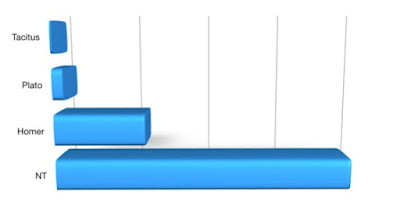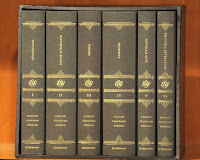“From time to time an angel of the Lord would come down and stir up the waters. The first one into the pool after each such disturbance would be cured of whatever disease they had” (John 5:4).If the above verse appears in your Bible at all, it will probably be in a footnote. It is not considered to be part of the biblical text anymore. Does that seem like an odd choice to start talking about why we can trust the Bible? Let me explain.
The New Testament was complete before AD 100. The Gutenberg printing press arrived in 1450. Until then, every copy of the Bible was made by hand. When hand copying anything of any length, copying mistakes are inevitable. Over the centuries typos naturally crept into the text. There were also additions to the text. Some were well-intentioned attempts to harmonize passages or to explain something in the text; others were probably just marginal notes a copyist thought were supposed to be part of the passage. In total the NT grew a couple of percent over those 1400 years.
We do not have the original writings of the New Testament authors. We probably don’t even have copies of copies of them. So how can we know that what we have is what they wrote?
It’s important to know that this situation is not unique to the Bible. Every ancient document has this same problem. A discipline called “textual criticism” was created to compare the copies we have to work back to the originals.
The usual example goes something like this: Suppose a group of thirty people were asked to copy a letter. Each of those thirty copies would have errors. But each would have different errors than the others. If the original were removed, you could compare them and determine what the original said. If you only had two copies, any time there was a difference you would have a 50-50 chance of getting the correct result. With 5 copies, it would usually be obvious what the correct reading was. The more copies you have, the easier it is to discern what the original said.
Now we have copies of copies of copies of copies, so there are errors that are transmitted to the next generation of copies, and then new errors are made as well, but by determining which copies are older and comparing and weighting what we have, experts can work their way back to the original text.
Again, this is not confined to the Bible. Homer, Julius Caesar, Tacitus, Herodotus, and Plato are the big name examples, but everything written before the widespread use of the printing press falls under this problem.
However the New Testament stands out in one respect: we have many more, and earlier, copies of it than of any other ancient work. As the late, eminent F. F. Bruce said, “There is no body of ancient literature in the world which enjoys such a wealth of good textual attestation as the New Testament.”
 |
| # of copies compared |
The result is that we have absolutely no doubt as to what greater than 99.7% of the NT says. Of the remaining 0.2-ish%, it is generally a matter of one word in a sentence that might be this or that. In no case do any of these uncertainties cast doubt on any major doctrines.
If someone gave you $100 dollars in pennies, and someone else came along and told you there was a chance that 2 of those 10,000 pennies were counterfeit, how concerned would you be?
The situation is not quite as tidy for the Old Testament — it’s more like 95%. But the Christian faith is built on the teachings of the apostles in the NT. The OT is history and background for the NT. Remember, the old covenant has been completed and set aside in favor of the new covenant established by Christ. A little bit of uncertainty about a line here or there in the OT does not undermine the Christian faith.
Thanks to textual criticism, we can identify all the places where words (or sentences) were added to the text. Places like the verse above have been removed. Two holdouts remain. The story of the woman caught in adultery (John 7:53-8:11) and the so-called long ending of Mark (16:9 and following) remain in the Bible but with notes like this one in Mark: “The earliest manuscripts and some other ancient witnesses do not have verses 9–20.” So there are no dirty little secrets. This is in the text, spelled out for all who care to see.
Skeptics today make a lot of noise about the copying errors in the Bible. They vastly overstate their case. They want you to doubt your Bible. You don’t need to. Even if we didn’t have the modern critical text, we would have everything we need for salvation, to know God, and to live the life he desires. But we do have the modern text, and we have no reason to doubt that it gives us the actual words of the apostles of Jesus Christ.
God has made sure that we have his word 2,000 years after it was written. What do you think the appropriate response to that should be?
For more information on this topic, see Dethroning Jesus by Bock and Wallace.
Photo credit: "Pennies" by foreverseptember
Part of Christianity 101



